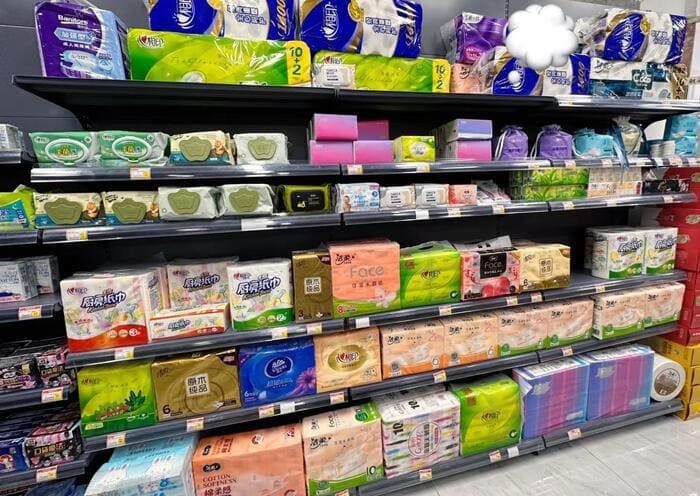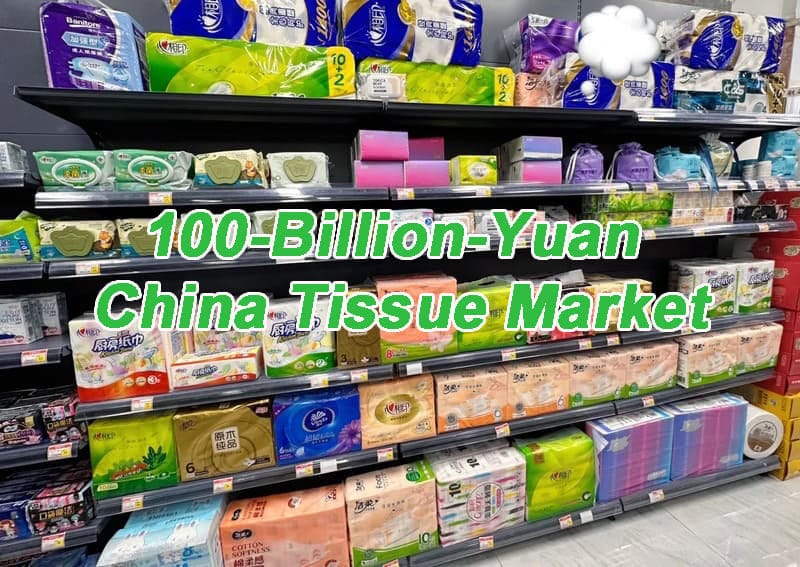Introduction to Moisturizing Additives in Lotion Facial Tissues
Lotion facial tissues – standard tissues infused with moisturizing lotion – are a growing segment in the tissue industry. These products offer extra softness and skin-soothing benefits, making them especially popular for baby care and sensitive skin applications. In both developed and developing markets, consumers are increasingly seeking gentler, premium tissues for wiping noses, faces, and delicate skin. For tissue converters and brand owners, understanding lotion tissue ingredients is key to meeting this demand. This article provides an overview of lotion tissue trends, details the common moisturizing additives (natural and synthetic) used in these products, compares their functions and usage levels, and discusses safety, regulatory compliance, and environmental considerations. We conclude with how a capable paper mill can supply high-quality lotion tissue mother rolls for OEM/ODM clients, delivering on softness, safety, and standards compliance.
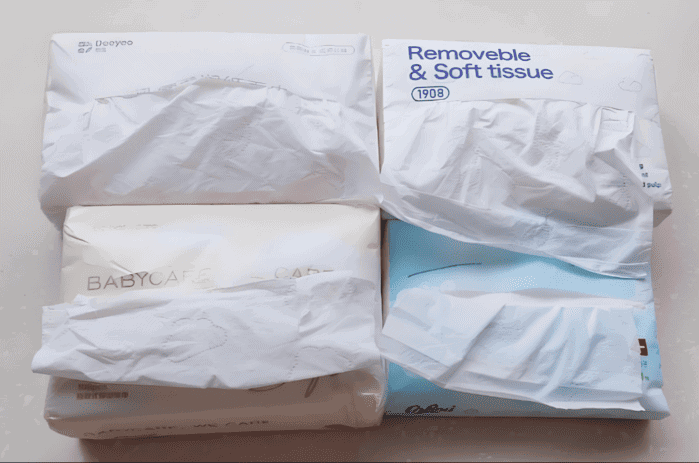
Growing Demand for Lotion Tissues in Baby Care and Sensitive Skin
Lotion tissues have evolved from a niche product into a mainstream necessity in many markets. Traditionally associated with baby care (to gently clean babies’ noses and faces without irritation), these tissues are now embraced by adults with sensitive skin and anyone seeking a touch of skincare in their daily tissue. The demand is driven by a few key trends:
- Comfort and Care: Consumers increasingly view facial tissues as an extension of skincare. A tissue infused with lotion can help prevent the redness or dryness that ordinary tissues might cause, especially during colds or allergies when one’s nose is wiped frequently. For babies and people with sensitive skin, this gentleness is critical.
- Premiumization: In emerging markets, rising incomes and awareness are fueling interest in premium personal care products. Lotion tissues offer a value-added alternative to plain tissues, positioning brands as quality-conscious. What started as a specialty product is becoming a standard offering for brands looking to differentiate.
- Baby and Healthcare Uses: Lotion tissues are not only in homes but also used in healthcare settings and nurseries. Parents prefer them for infants to avoid chafing a baby’s delicate skin. Hospitals and elder care facilities may use them for patients with fragile skin. This broader usage underscores a growing market segment focused on gentle, moisturizing hygiene products.
Overall, global market analyses show steady growth in lotion tissue adoption year over year. Consumers in developing regions are discovering what those in mature markets already know – a tissue with a bit of lotion can deliver a noticeably softer, more soothing experience. For brand owners, this trend represents an opportunity to upgrade product lines and capture consumers seeking a “softer touch.”
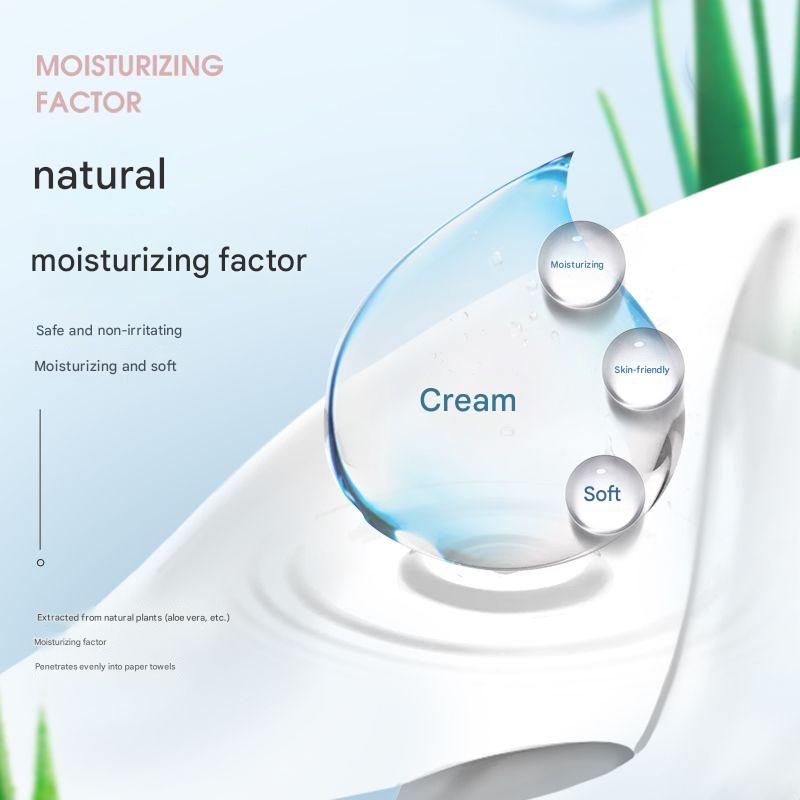
Key Moisturizing and Functional Ingredients in Lotion Tissues
To create lotion tissues, manufacturers apply a specialized lotion or balm to the tissue during production. This lotion is formulated with ingredients that impart moisture, softness, and skincare benefits without making the tissue too wet or greasy. Below we introduce specific ingredients commonly used, grouped by category:
Natural Moisturizing Ingredients
Natural humectants and emollients attract water to the skin or provide gentle hydration. These are often derived from plants and are valued for being skin-friendly and familiar to consumers. Key natural moisturizers include:
- Glycerin: A plant-derived humectant (often from vegetable oils) that draws moisture into the skin. Glycerin helps keep the tissue slightly damp-feeling and prevents skin from drying out. It’s a cornerstone of many lotion formulas due to its effectiveness and safety.
- Hyaluronic Acid: A naturally occurring polysaccharide famous for holding many times its weight in water. In tissues, hyaluronic acid provides a light, invisible moisturizing layer that can relieve dry, irritated skin. Even in tiny amounts, it offers a hydrating boost, making it ideal for sensitive facial areas.
- Aloe Vera: Extract from aloe plant leaves, known for its soothing and moisturizing properties. Aloe vera gel or powder is added to lotion tissues to calm irritated skin (for example, a sore nose) and add a perception of natural care. It’s popular in products for both babies and adults because of its gentle, calming effect.
- Natural Plant Oils (e.g., coconut oil, jojoba oil): Oils from plants can act as emollients, creating a soft barrier on the skin that locks in moisture. For instance, coconut oil is used in some lotion tissues to help the tissue glide over sore skin and leave it feeling nourished. Jojoba oil (which chemically resembles skin’s natural oils) is another example that can condition the skin without heavy residue.
Synthetic Humectants
Synthetic humectants are man-made ingredients designed to retain moisture. They complement or sometimes substitute natural moisturizers to ensure the tissue lotion remains effective and stable. Common synthetic humectants include:
- Polyethylene Glycol (PEG): PEGs (in various molecular weights) are used to retain moisture and sometimes to bind the lotion ingredients together. They help keep the tissue pliable and not overly dry. PEG can also act as a solubilizer, blending oils with other components. It’s a versatile additive – for example, PEG-40 Stearate might be used as both a humectant and emulsifier in the lotion formula.
- Propylene Glycol: A clear, odorless liquid humectant that attracts water. Propylene glycol is often used in personal care products to maintain moisture content and help active ingredients penetrate. In lotion tissues, it can keep the lotion from drying out and impart a subtle moistness to the tissue. It’s effective in small amounts, though formulations for sensitive users ensure the levels are low enough to avoid any irritation (propylene glycol is generally gentle, but very high concentrations can bother extra-sensitive skin).
Softening Agents and Emollients
To give lotion tissues their signature silky softness, formulators include agents that coat fibers and reduce friction. These ingredients make the tissue feel smoother on the skin and often also help the lotion spread evenly on the paper. Key softening additives include:
- Fatty Acid Esters (e.g., Isopropyl Palmitate, Glyceryl Stearate): These are compounds made from fatty acids and alcohols. In lotion tissues, they act as lightweight oils that soften the tissue texture. For example, Isopropyl Palmitate is an ester that absorbs quickly and leaves a non-greasy softness, helping the tissue glide over skin. Fatty acid esters can also condition the paper fibers, preventing them from feeling rough or papery.
- Silicone Derivatives (e.g., Dimethicone): Silicones are known for imparting a silky, smooth feel. Dimethicone, a common cosmetic silicone, is often added to lotion tissues to reduce friction and serve as a skin protectant. It forms a thin, smooth barrier on the skin, which not only makes the tissue feel ultra-soft as it passes over delicate areas but also helps protect irritated or chapped skin (for instance, shielding a raw nose from further irritation). Silicones are very effective even at low levels and contribute to that luxurious, velvety touch in premium tissues.
Other Functional Additives
Beyond the core moisturizers and softeners, lotion tissues may include special ingredients to enhance skin benefits or maintain the formula’s quality. Some of these functional additives are:
- Shea Butter: A natural butter extracted from the nuts of the shea tree, rich in fatty acids and vitamins. Shea butter is an excellent moisturizer and soothing agent. In tissues, it can leave a delicate layer on the skin that alleviates dryness. It’s particularly appealing for baby-care tissues or cold-season tissues because of its ultra-gentle, nourishing nature.
- Vitamin E (Tocopherol or Tocopheryl Acetate): A powerful antioxidant and skin-conditioning agent. Vitamin E is often included in lotion tissues to support skin health (it’s known to help soothe and repair the skin barrier). Additionally, it protects the oils in the lotion from oxidation, thus maintaining the lotion’s quality during the product’s shelf life. Its presence is a good marketing point as well, since consumers associate vitamin E with skincare benefits.
- Chamomile Extract: Chamomile, derived from the chamomile flower, is famed for its calming and anti-inflammatory properties. A chamomile extract or distillate can be added to lotion tissues intended for sensitive or irritated skin. It helps reduce redness and discomfort – for example, when a tissue is used repeatedly on a sore nose, chamomile can provide a mild soothing effect. This botanical ingredient signals gentleness, making it ideal for baby-friendly products.
- Witch Hazel: An extract from the witch hazel plant, often used as a natural astringent and soothing agent. In lotion tissues, witch hazel can offer a refreshing, calming touch that can ease inflammation. It’s commonly found in products for acne-prone or irritated skin, but in a tissue, it might be included in very small amounts to tone down redness and provide a fresh feel. Any witch hazel used in baby or sensitive skin tissues is typically alcohol-free (to avoid drying the skin).
- Preservatives: If the lotion formulation contains any water or plant extracts that could support microbial growth, preservatives are essential to ensure the tissue remains hygienic over its shelf life. Common cosmetic preservatives used in lotion tissues include phenoxyethanol, sodium benzoate, or potassium sorbate, among others – all at low concentrations (usually well below 1%). These prevent bacteria or mold from growing in the tissue box, especially important in humid climates. Importantly, only preservatives that are approved by cosmetic regulations are used, and in the lowest effective amounts. Many lotion tissue brands opt for “paraben-free” preservation systems and avoid harsh preservatives, aligning with consumer preferences for gentle, hypoallergenic products.
Each of these ingredients plays a specific role in a lotion tissue’s performance, from locking in moisture to ensuring a silky feel or prolonging product shelf life. Manufacturers choose and balance these components carefully to achieve a lotion that enhances the tissue without compromising its primary function (absorbency and strength) or safety.
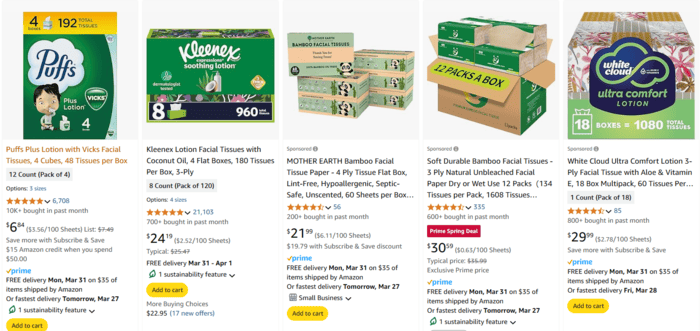
Comparison of Lotion Tissue Ingredients and Their Functions
The table below provides a technical comparison of the major ingredients discussed, including their type/category, primary function in lotion tissues, typical inclusion levels, and notes on safety compliance with international standards. This summary can serve as a quick reference for product developers and quality teams.
| Ingredient (Type) | Function in Lotion Tissues | Typical Inclusion Rate | Safety Compliance |
|---|---|---|---|
| Glycerin (Natural humectant) | Attracts and retains moisture; keeps tissue and skin hydrated. Adds gentle skin-soothing effect. | ~1–5% of tissue weight (can be a large portion of lotion formula) | Cosmetic-grade glycerin is accepted by FDA and EU regulations. Generally recognized as safe for topical use; compliant with ISO 22716 GMP practices. |
| Hyaluronic Acid (Natural humectant) | Binds water to the skin; provides hydration and plumping effect to irritated skin. | ~0.1–0.5% (very effective at low doses) | Used in many cosmetic products worldwide; allowed under EU Cosmetic Regulation 1223/2009 and FDA cosmetic guidelines. Non-irritating and safe for sensitive use. |
| Aloe Vera Extract (Natural botanical moisturizer) | Soothes and moisturizes skin; calms redness and irritation. | ~0.5–2% (as concentrated extract; often a small but potent portion) | Widely used natural ingredient in FDA-regulated cosmetics and EU-compliant formulations. Safe for all ages when properly purified (free of aloin). |
| Natural Plant Oils (e.g. Coconut, Jojoba) | Emollient oils that soften skin and reduce friction; leave a nourishing protective layer. | ~1–5% (per oil used, combined oils often <10%) | Generally regarded as safe oils in cosmetics (FDA cosmetic safe, EU-approved if free of allergens). Use cosmetic-grade, allergen-screened oils especially for sensitive skin products. |
| Polyethylene Glycol (PEG) (Synthetic humectant/emulsifier) | Retains moisture in tissue; helps blend oil and water components (emulsifying effect); keeps lotion evenly distributed. | ~1–5% (can be higher in lotion concentrate but low in finished tissue) | Cosmetic PEG compounds are permitted by FDA and EU authorities. Should be high-purity (meeting safety standards on any impurities). Manufacture under ISO 22716 to ensure quality. |
| Propylene Glycol (Synthetic humectant) | Attracts water and prevents drying; provides a light moisturizing effect on skin. | ~0.5–3% of lotion formula (small effective dose) | Approved for use in cosmetics (FDA and EU) – in fact, also food-grade. Safe in the low concentrations used for tissues; compliant with cosmetic regulations for all ages (monitor levels for very sensitive users). |
| Fatty Acid Esters (e.g. Isopropyl Palmitate) (Softening emollient) | Improves tissue softness and pliability; imparts a smooth, non-greasy feel on skin contact. Helps lotion spread on tissue fibers. | ~1–5% of lotion formula per ester (often used in combination) | Common cosmetic emollients, allowed by global standards. Non-sensitizing and used in baby lotions and creams. Meet FDA and EU safety criteria when cosmetic grade is used. |
| Silicone Derivatives (e.g. Dimethicone) (Softener & skin protectant) | Provides a silky, gliding feel; reduces skin friction and forms a protective barrier on skin to lock in moisture. Prevents irritation from wiping. | ~0.1–0.5% (very low levels needed for effect) | Dimethicone and similar silicones are FDA-approved skin protectants and allowed in EU cosmetics. Considered inert and hypoallergenic. Production should follow ISO 22716 to avoid contamination. |
| Shea Butter (Natural butter emollient) | Deeply moisturizes and nourishes skin; adds richness to the lotion and helps relieve dryness on contact. | ~1–5% of lotion formula (solid fat component) | Used extensively in infant and adult skincare; recognized as safe and compliant with EU cosmetic rules and FDA cosmetics guidelines. No known harmful components; generally non-allergenic. |
| Vitamin E (Tocopherol/Tocopheryl Acetate) (Antioxidant) | Conditions skin and provides antioxidant protection. Helps protect lotion ingredients from oxidation/rancidity. | ~0.1–0.5% (small amount as antioxidant) | Vitamin E is an approved additive in cosmetics worldwide. Safe for topical use (even on infants) per FDA and EU standards. Often added according to ISO 22716 guidelines to ensure stability of product. |
| Chamomile Extract (Botanical extract) | Soothing and anti-inflammatory effect; reduces redness and discomfort on skin. | ~0.1–1% (small amount for effect) | A traditional gentle ingredient in baby care; safe per cosmetic regulations (chamomile is not restricted by FDA/EU). Use high-quality extract to avoid any allergens (comply with ISO 22716 handling). |
| Witch Hazel (Botanical extract/astringent) | Gently tones and calms the skin; can reduce irritation and provide a fresh feel. | ~0.5–2% (if used; often a dilute distillate) | Long history of safe use on skin (including baby wipes). Allowed by FDA/EU in cosmetics. Ensure low alcohol or alcohol-free versions for sensitive skin. |
| Preservatives (e.g. Phenoxyethanol, Sodium Benzoate) | Prevent microbial growth in the lotion/tissue, ensuring product remains safe and free of bacteria or mold. | ~0.1–0.5% (use the minimum effective level) | Must use preservatives approved by regulations (FDA and Annex V of EU Reg. 1223/2009). Used in compliance with concentration limits. Properly formulated under GMP to be effective yet gentle (avoid known irritant preservatives in baby products). |
Note: Inclusion rates are approximate and can vary based on the specific product formulation. “Tissue weight” refers to the percentage in the final tissue product by weight. All listed ingredients are generally permitted under major international cosmetic regulations (United States FDA cosmetic safety guidelines, Europe’s Cosmetic Regulation EC No. 1223/2009) and should be handled in production according to Good Manufacturing Practices (ISO 22716). Always consult the latest regulatory lists for any updates on restrictions, especially for sensitive-skin or baby-focused products.
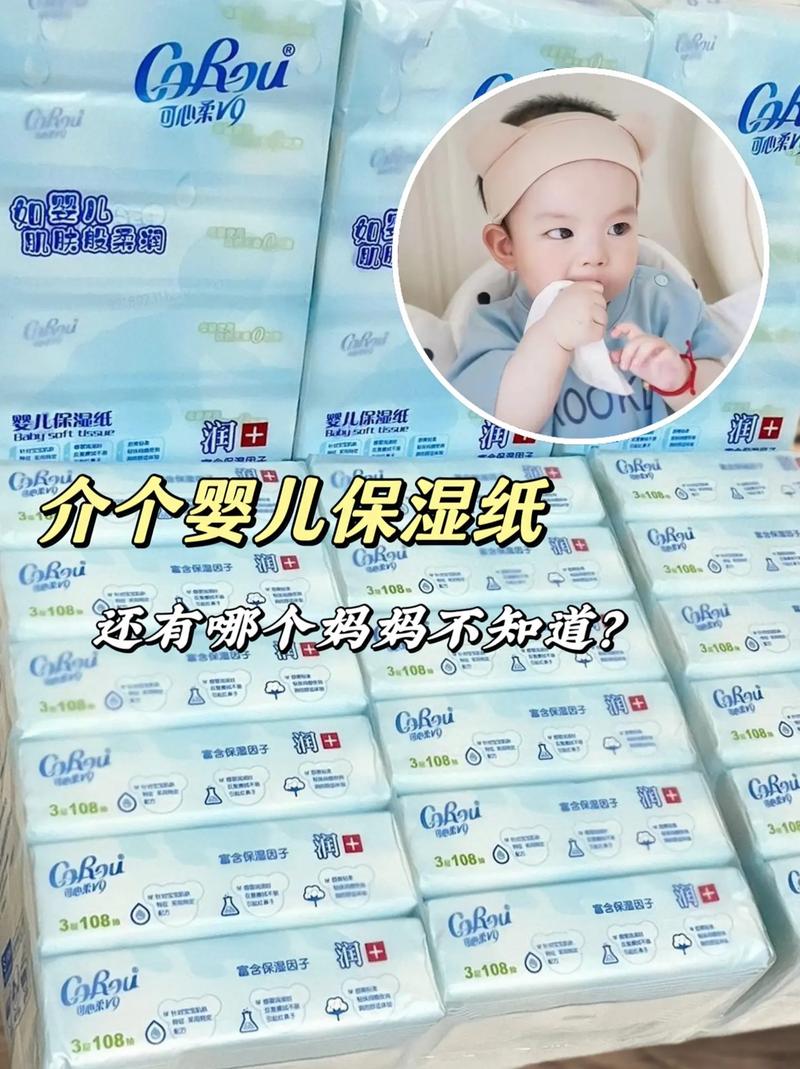
Safety for Sensitive Skin and Baby Use
When formulating lotion tissues for babies or people with allergies, safety and mildness are paramount. The good news is that the moisturizing ingredients discussed above are, by and large, safe for all ages – but best practices must be followed to ensure a truly hypoallergenic product:
- Hypoallergenic Formulation: This means choosing ingredients that have a low risk of causing allergic reactions or irritation. For example, aloe vera, glycerin, and shea butter are generally well-tolerated by most skin types (including infants’). All ingredients should be cosmetic grade and tested for purity (no pesticide residues, low impurity levels, etc.). By avoiding common irritants – like strong fragrances, menthol, or certain essential oils – the tissues are less likely to cause redness or rash. Many lotion tissues meant for baby care are fragrance-free for this reason.
- Safe Levels and Ingredient Restrictions: Even safe ingredients need to be used in appropriate amounts. Propylene glycol, for instance, is safe for topical use, but using an excessive amount could potentially irritate very delicate skin. The same goes for botanical extracts – a little can soothe, but too much might be sensitizing. Regulatory bodies like the EU have specific restrictions for some additives in products intended for children under three years old. A formulator must be aware of these. For example, certain preservatives or antibacterial agents that might be acceptable in adult products are not allowed (or are limited to lower concentrations) in baby products. By adhering to these guidelines, manufacturers ensure the lotion tissue is genuinely safe for infants.
- Dermatologically Tested: Responsible brands will test their lotion tissue products on panels of volunteers (or via laboratory skin patch tests) to ensure they don’t cause irritation. Terms like “dermatologist tested” or “pediatrician approved” often indicate that the product underwent evaluation for mildness. While such claims are marketing messages, they are backed by real testing that gives an extra layer of assurance, which is crucial when the end users are babies or people with eczema, allergies, etc.
- No Harsh Chemicals: Lotion tissues intended for sensitive users will avoid anything that could be harsh or drying. That includes ethyl alcohol (which would dry out skin), harsh surfactants (not typically in tissues anyway), or potentially harmful additives. All the ingredients listed in our comparison table are considered safe; however, some older lotion tissue formulations included things like lanolin or certain quaternary compounds – effective softeners but known to cause allergies in some individuals. Modern formulations for sensitive skin tend to avoid those. In the EU, over 1,300 substances are banned from cosmetics – a lotion tissue for global markets will obviously exclude any such prohibited chemicals.
- Regulatory Compliance for Baby Products: There isn’t a separate FDA rulebook just for baby cosmetics, but regulators pay extra attention to products marketed for infants. It’s expected that manufacturers follow guidance for infant skincare. This includes using only colorants, preservatives, etc., that are proven safe for this demographic. For instance, Europe’s regulatory framework may demand specific warning labels if certain ingredients are present in any product used on children. By being well-informed and possibly reformulating for baby lines (for example, using food-grade preservatives like sodium benzoate or naturally derived alternatives), companies can confidently label their lotion tissues as “baby-safe” or “suitable for sensitive skin.”
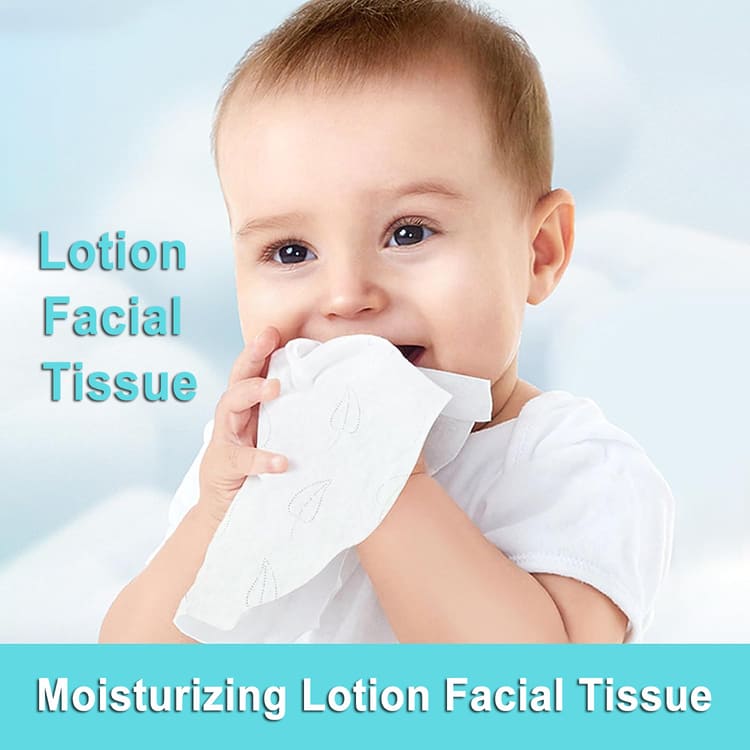
- Use gentle, well-tested ingredients.
- Keep each component within proven safe concentration ranges.
- Avoid known allergens or restrictives for infants.
- Follow global safety guidelines and perform actual product testing.
By following these steps, converters and brand owners can create lotion tissues that parents feel good about using on their little ones (or that anyone with sensitive skin can trust). It’s all about balancing efficacy (you want the tissue to moisturize and soothe) with purity and mildness.
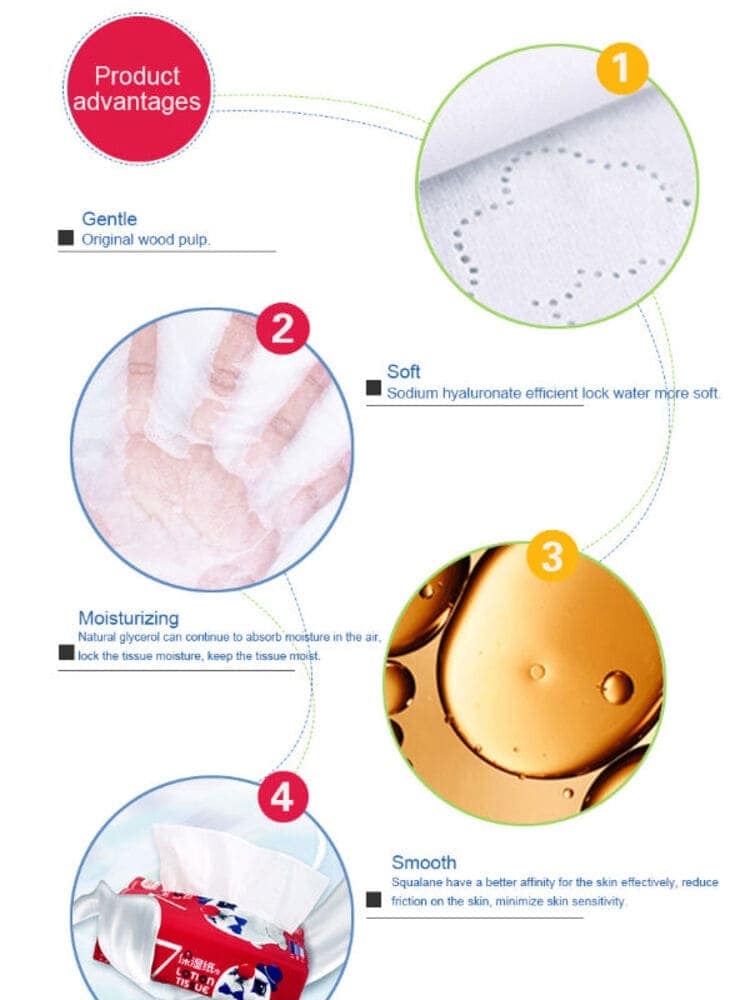
International Standards and Regulatory Compliance
Any company producing lotion tissues – especially for export or for reputable retailers – must ensure compliance with international cosmetic and safety standards. Lotion facial tissues, due to their skin contact and lotion content, are generally treated as cosmetic products in many jurisdictions. Here are the key standards and regulations typically referenced:
- FDA (United States – Food & Drug Administration): In the U.S., products like lotion-infused tissues are regulated under the FDA’s cosmetics guidelines (as long as they don’t make medical claims). The FDA requires that ingredients be safe for their intended use. While the FDA does not pre-approve cosmetic ingredients (except color additives), it holds manufacturers responsible for product safety. Compliance means using only approved colorants, not using any banned substances, and adhering to labeling requirements. Manufacturing should follow sanitary practices (the FDA has guidance for Cosmetic Good Manufacturing Practices, which align closely with ISO 22716). A lotion tissue manufacturer should be registered or at least compliant with any voluntary cosmetic registration programs and be ready to substantiate the safety of the product if challenged.
- ISO 22716 (Cosmetics GMP): This is an international standard titled “Cosmetics – Good Manufacturing Practices (GMP) – Guidelines on Good Manufacturing Practices”. ISO 22716 provides detailed guidelines for production, quality control, storage, and shipping of cosmetic products. Adhering to ISO 22716 means the facility has a quality management system ensuring consistent, hygienic, and controlled production. For lotion tissues, this is crucial because it ensures that the lotion is mixed correctly every time, that no contamination occurs, and that full traceability of ingredients is maintained. Many large brand owners require their suppliers (including OEM manufacturers of lotion tissues) to be ISO 22716 certified. It’s essentially proof that the manufacturer can produce safe, quality-consistent products at scale.
- EU Cosmetic Regulation (EC No. 1223/2009): The European Union’s cosmetics regulation is one of the strictest in the world. Any lotion tissue sold in EU countries must comply with this framework. Key aspects include: a comprehensive safety assessment by a qualified assessor for the finished product, use of only allowed ingredients (the regulation has annexes listing prohibited substances, restricted substances, and approved preservatives, UV filters, colorants, etc.), proper labeling (including an ingredient list in INCI names), and adherence to GMP (as mentioned, compliance with ISO 22716 is how most companies meet the EU’s GMP requirement). Additionally, for products used on children, certain ingredients might trigger specific warnings or might be outright not allowed – the safety assessor will ensure the formula is appropriate. The EU regulation also requires that products are not tested on animals, and while this is not directly about ingredients, it’s part of compliance for any cosmetics in Europe.
Other regions have their standards (for instance, China has its own cosmetic regulations, and developing markets may have bureaus of standards or health ministries that expect similar compliance or registration). Generally, if a lotion tissue formula meets FDA and EU requirements and is manufactured under ISO 22716 GMP, it will satisfy most international markets’ safety expectations.
For a tissue converter or brand owner, working with a manufacturing partner that follows these standards provides peace of mind. It means the ingredients used have been vetted against global safety databases, the production is clean and controlled, and all necessary documentation (like Safety Data Sheets, product information files, etc.) is in order for compliance. Ultimately, regulatory compliance is not just a box to tick – it directly correlates with product quality and consumer trust.

Environmental Considerations
As with all paper products, the environmental profile of lotion tissues is an important consideration for modern consumers and brands. There are two main aspects to consider: the base tissue fibers and the lotion additives.
- Biodegradable Base Fibers: Facial tissues are typically made from cellulose fibers (virgin wood pulp, bamboo fiber, or recycled paper pulp). These fibers are naturally biodegradable and compostable. When producing lotion tissues, manufacturers ensure that adding lotion does not compromise the tissue’s ability to break down. Generally, since the amount of lotion is relatively small compared to the paper, lotion tissues remain biodegradable. Some brands even use unbleached or sustainably sourced pulp (with certifications like FSC) to enhance the eco-friendliness of the tissue itself. In developing markets, using locally sourced fiber (like fast-growing bamboo or sugarcane bagasse) can also reduce environmental footprint and appeal to eco-conscious consumers.
- Impact of Additives: The moisturizing lotion additives are usually a mix of organic compounds, many of which (like plant oils, glycerin, shea butter) are biodegradable or derived from natural sources. These will gradually break down in the environment. However, some synthetic ingredients deserve attention:
- Silicones: Ingredients like dimethicone are not readily biodegradable. They tend to be inert and may persist in the environment for some time. The upside is that they are used in very small quantities in tissues. Brands concerned with this often try to minimize silicone content or use alternative natural softeners where possible.
- Mineral Oil & Waxes: Petroleum-derived oils and waxes (if used) are also slow to biodegrade. Again, in lotion tissues they are in small amounts, but a trend in the industry is to replace mineral oil with natural oils to improve renewability. Natural oils can biodegrade faster and come from renewable sources.
- Preservatives: Some preservatives (e.g. parabens or certain antimicrobials) can be harmful to aquatic life if large amounts were to enter waterways. While the trace amounts in tissues are unlikely to cause environmental harm in normal use/disposal, many manufacturers opt for biodegradable preservatives or those that don’t accumulate in the environment. For instance, sodium benzoate breaks down relatively innocuously.
- Flushability and Disposal: Most facial tissues (lotion or not) are not recommended to be flushed, as they are designed to be stronger when wet (to hold up during use) and thus can cause plumbing clogs. From an environmental perspective, advising consumers to dispose of used tissues in the trash (where they will biodegrade in landfill or can be composted) is wise. Some companies are working on flushable lotion tissues, but this requires careful formulation to ensure rapid fiber disintegration – a challenging balance when lotion ingredients inherently resist water a bit.
- Packaging and Overall Footprint: Although not about the tissue fiber or additives per se, environmental consideration extends to packaging (using recyclable cardboard boxes, avoiding plastic if possible, or using recycled content in the box). Also, the production process should minimize waste. Under ISO 22716 and similar quality systems, efficient use of materials is encouraged, which indirectly benefits the environment by reducing waste of lotion ingredients and raw materials.
In summary, lotion tissues can be made with environmental responsibility in mind. By choosing biodegradable base materials and keeping additive levels just to what’s needed for performance, manufacturers ensure the final product remains as eco-friendly as a regular tissue. Innovative brands in developing markets are even exploring herbal or green formulations (all-natural lotion ingredients) to market their lotion tissues as sustainable and safe. The key is transparency about ingredients and continuous improvement – for instance, working on bio-based alternatives for any synthetic components. As consumer awareness grows, the most successful tissue brands will likely be those that deliver softness and skincare without compromising on sustainability.
Conclusion: Delivering Premium Base Paper Rolls for Lotion Facial Tissues
As a leading tissue paper manufacturer, we deeply understand the science behind softness and quality. While we do not directly produce lotion-infused tissues, our paper mill specializes in manufacturing premium-quality tissue paper parent rolls, which are specifically engineered to meet the high standards required for lotion tissue conversion by our OEM and ODM partners worldwide.
Superior Softness and Absorbency:
Our tissue paper parent rolls are designed to deliver exceptional softness, strength, and absorbency—making them the ideal base for lotion facial tissue applications. Our advanced manufacturing techniques ensure each roll provides the perfect foundation to retain lotion additives, creating tissues that are both soft to the touch and highly effective in use.
Guaranteed Safety and Compliance:
We adhere strictly to international quality and safety standards, including FDA guidelines, EU Cosmetic Regulation (EC No. 1223/2009), and ISO 22716 Good Manufacturing Practices. Although we do not add lotion ourselves, our rigorous quality control ensures the base paper is hypoallergenic and suitable for sensitive skin and baby care products. This enables our clients to confidently apply their own lotion formulations, knowing they are starting with a safe, compliant base paper.
Reliable Partnership for OEM/ODM Clients:
By partnering with us, tissue converters and brand owners in developing markets gain access to premium parent rolls crafted for superior performance. Our experienced R&D team can support your product development process, collaborating to help you achieve the ideal lotion formulation compatibility for your market, whether it’s adjusting absorbency levels, strength, or softness parameters.
In a market where consumers increasingly demand gentle, soothing products, our tissue parent rolls represent a strong foundation upon which you can build innovative, comforting lotion facial tissues. At Asia Symbol, we’re committed to providing high-quality, consistent, and compliant tissue paper that helps your brand stand out, meeting the evolving needs of your customers with care, comfort, and confidence.
Your customers want the best for their skin – and we’re here to help you provide it, one soft tissue at a time.

